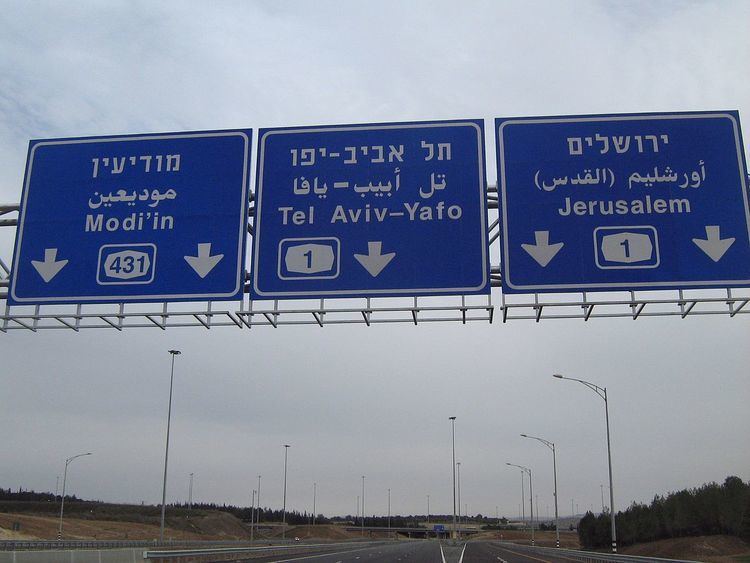 | ||
Road signs in Israel are decided by the Ministry of Transportation in the Division of Transportation Planning, most recently set forth in June 2011.
Contents
They generally use the same pattern of colours, shapes, and symbols as used in most countries of Europe and the Middle East and set out in the Vienna Convention on Road Signs and Signals.
Language
Signs employ three scripts – Hebrew, Arabic, and Latin – and are written in Hebrew and Arabic, the two official languages of the country, and in English.
The stop sign, however, instead of displaying words in three languages, conveys its meaning through the depiction of a raised hand.
Signs giving warnings
Signs warning of hazardous conditions or dangerous situations (e.g. "Intersection" or "Steep incline ahead" bear a black-on-white symbol inside a red-bordered triangle (point uppermost).
Signs giving orders
With the exception of the special shapes used for "Stop" and "Yield" signs (respectively, an octagon and a downward-pointing triangle), signs giving orders are circular and are of two kinds:
Signs giving information
Signs giving information are generally rectangular (sometimes pointed at one end in the case of direction signage).
Highways in Israel are classified as:
Route-marker signs are also colour-coded:
Most directional signs to towns and cities are:
The sign for permitted parking features a white-on-blue "P" for "parking" enclosed by the Hebrew letter Het ("ח") for "hanaya" (Hebrew: חניה), which also means "parking").
The sign informing users that they are on a priority road is a white-edged yellow "diamond" (i.e. a square turned through 45°).
